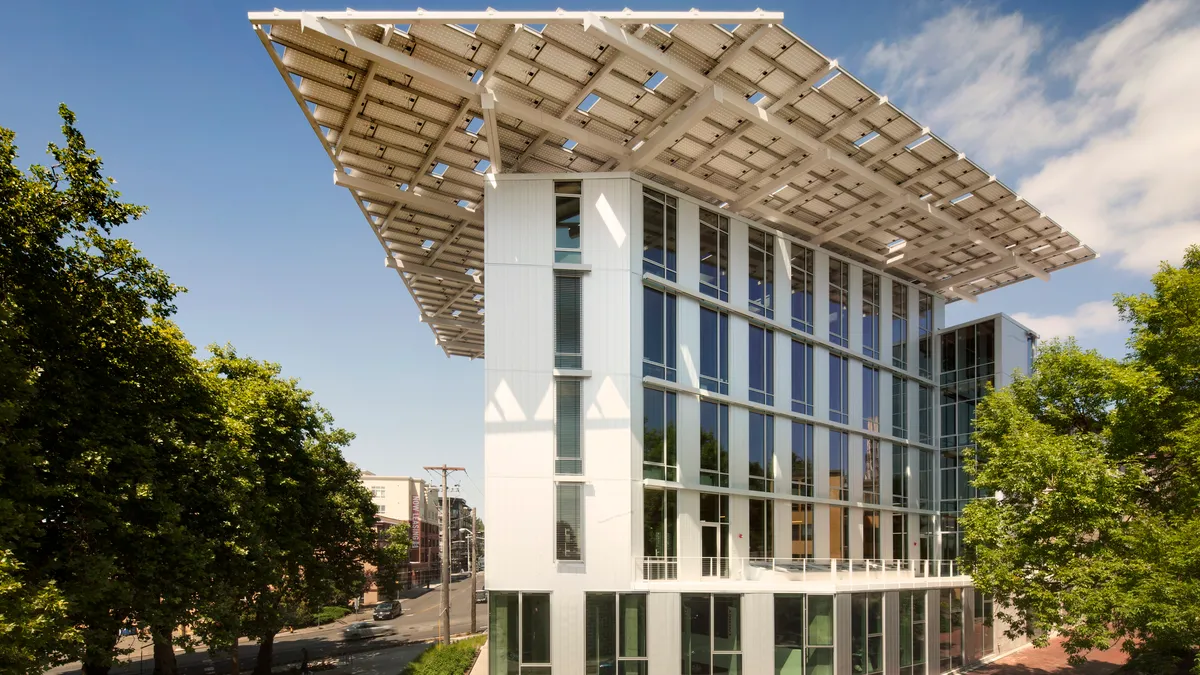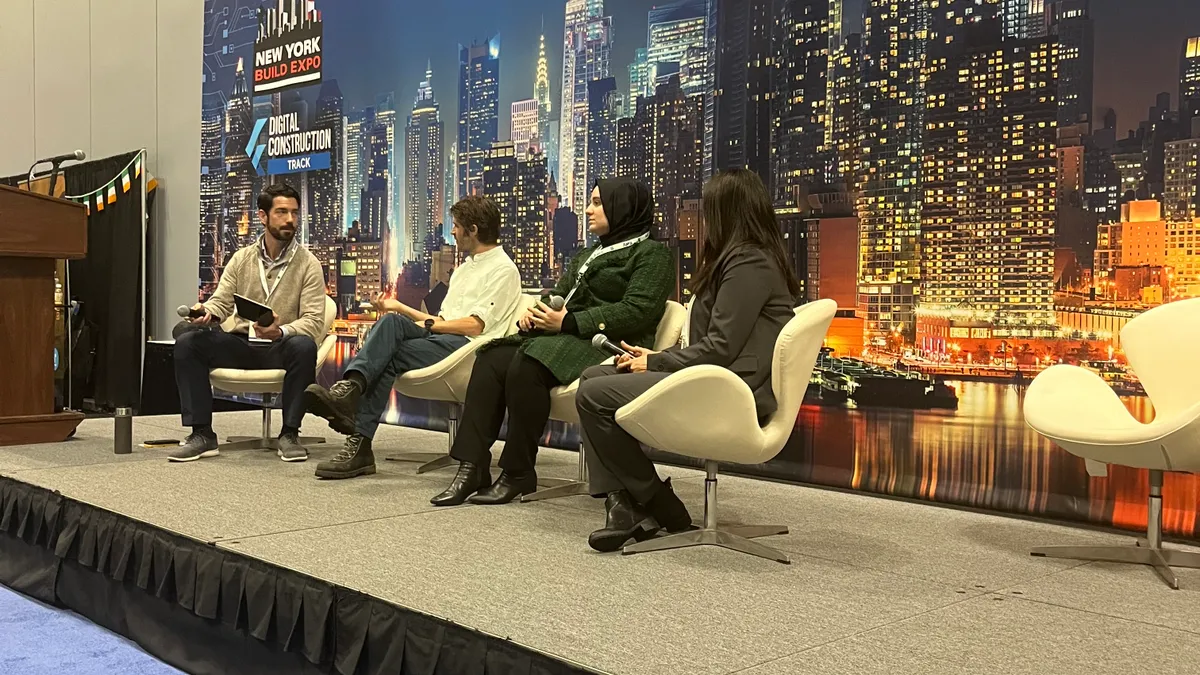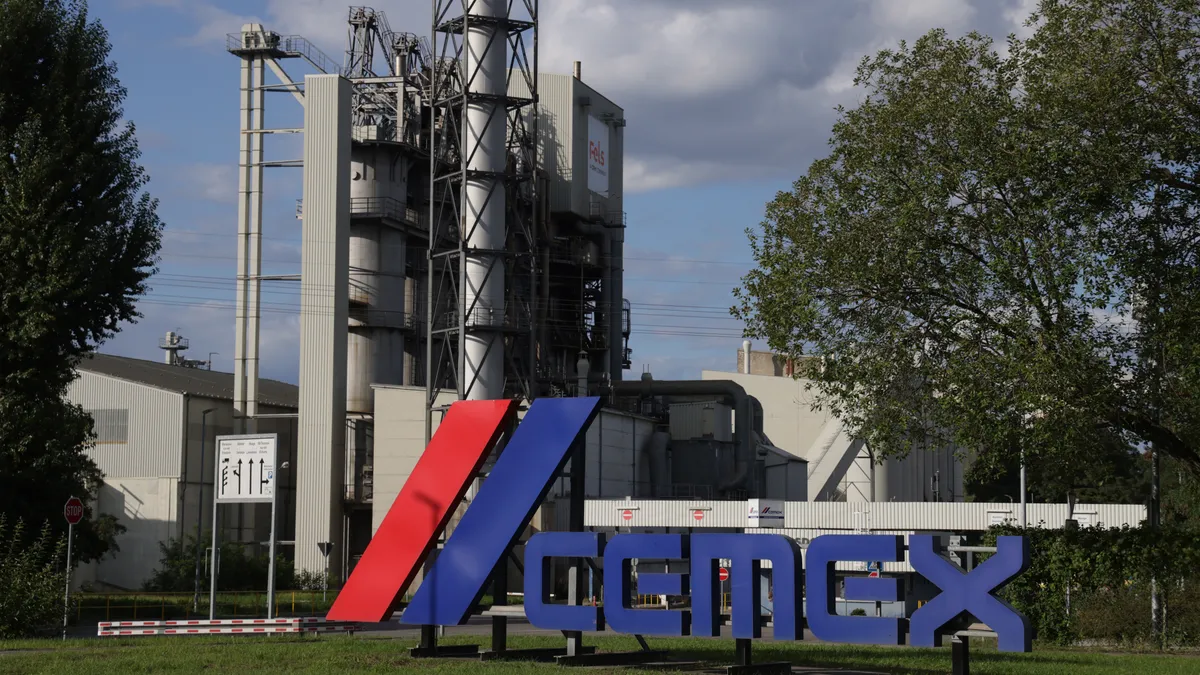There’s no doubt that in the current construction world, it's all about sustainability. The industry has the U.S. Green Building Council’s LEED standards, solar panels popping up everywhere and even net-zero buildings — so efficient that they produce at least as much energy as they consume, oftentimes more.
And while achieving net-zero is no simple feat, it’s a relative walk in the park compared to the International Living Future Institute’s (ILFI) Living Building Challenge (LBC) certification. In fact, there are currently fewer than 10 certified buildings in existence.
Requirements of Living Buildings
Building owners wishing to be certified under the LBC must meet the requirements of 20 imperatives that the ILFI has put forth in seven different categories, or "petals":
PLACE
- Limits to growth
- Urban agriculture
- Habitat exchange
- Car-free living
WATER
- Net positive water
ENERGY
- Net positive energy
HEALTH AND HAPPINESS
- Civilized environment
- Healthy interior environment
- Biophilic environment
MATERIALS
- Red list
- Embodied carbon footprint
- Responsible industry
- Living economy sourcing
- Net positive waste
EQUITY
- Human scale + human places
- Universal access to nature & place
- Equitable investment
- JUST organizations
BEAUTY
- Beauty + Spirit
- Inspiration + Education
For example, the healthy interior environment requirement under the Health & Happiness petal would require that smoking not be permitted. To achieve certification, applicants must register their building with the ILFI and then document and maintain all petals in a satisfactory manner for 12 months.
A movement in its 'toddler' stage
Stacy Smedley, director of sustainability at Skanska USA, said she has been involved with the ILFI since its early days and, in fact, was the architect on the Bertschi School where the Living Science Classroom is LBC certified. "It was very new, and we were responding to the challenge to go build these buildings to show it was possible," she told Construction Dive.
That was in 2009, and the LBC was something people were starting to hear about but didn’t really understand, she noted. Now, more people know what she’s talking about when she mentions the LBC, and she doesn’t have to spend quite as much time explaining it, which, she said, is her "litmus test" for measuring the LBC’s growth.
ILFI Chief Executive Officer Amanda Sturgeon told Construction Dive, "A few projects picked it up right away and started exploring it, and that was the beginning."
While Smedley wouldn’t go so far as to say that the Living Building movement is in its infancy, she said perhaps the characterization of it as a "toddler" is more on the mark, as she referenced the large number of projects in the 12-month precertification phase.
Sturgeon said there are currently approximately 20 buildings in the precertification process and added that they should be announcing that several have met certification requirements in the lead up to the ILFI conference in May.
Why choose the Living Building path
So why would a building owner embark on such a difficult journey?
Sturgeon said many building owners are drawn to the program because they see the connection between a Living Building and the change they want to see in the world. "Typically, the people drawn to it are people that want us to really address climate change on a global scale and see the role our built environment plays in that," she said. "People who are taken by the challenge want to see a built environment that is able to function like a living system."
Sturgeon, who is also an architect, said LEED has been a successful program as far as changing the way people think about building but believes it might appeal "to the left brain" because of its black-and-white, checklist aspects.
"I think (the LBC is) for those who are perhaps a bit more on the right brain side and creative and really want a framework in which they can work out their own path to get there," she said.
Smedley added that practicality enters into the equation for many builders, as Seattle, for example, allows developers land-use variations like height and square footage bonuses if they pursue Living Building certification through the city's Living Building Pilot program. That program will expire in June 2016 or when 12 buildings achieve LBC certification, whichever comes first.
While Smedley acknowledged that not every city is so aggressive in promoting sustainable building, she said that if a city is trying to become more progressive and more sustainable, an LBC project can be the first important step in simply showing the community what’s possible. "There’s a type of leadership that comes from city and state governments that help push people to do this based on 'non-fluffy' heartfelt things," she said.
Possible obstacles to achieving certification
However, as with many things for which enthusiasm is high at the outset, both Smedley and Sturgeon agreed that some building owners "hit the wall" during the precertification process and can languish there for years. "The projects that are successful are the ones that are really entering it with their eyes open and entering the process with a desire to learn and to genuinely improve the building," Sturgeon said.
Smedley said that much of a building's progress toward certification depends on the type of structure. A residential project provides an environment for total control by the owner, whereas a commercial building with tenants has to overcome the difficulties associated with getting tenant buy-in. She said discussions with developers on how to address water and power restrictions quickly turn to issues of leaseability of the space. "I think that's the challenging part when it comes to commercial office or mixed-use residential," she said.
One tactic to get tenants on board with the Challenge, according to Smedley, is to make clear the benefits to them, such as reduced energy bills and better quality of air and materials that would not be in a standard office building. "There’s a two-step approach of designing to a certain efficiency, and then telling the story of it in a way that’s really valuable for the developer or potential tenants of that space," she said.
For those who don’t see a feasible path to LBC, ILFI also offers Petal certification, which requires that a building owner meet three of the petals (categories). Included in the three, however, must be water, energy or materials.
Smedley said Seattle’s pilot program offers benefits to those developers or builders who can meet that level of Living Building as well. "They’re trying to make these incremental steps that are tolerable and make market sense to developers who might not be doing (the LBC) because they don’t really want to be the saver of the environment," Smedley said.
Sturgeon noted that there are many projects that don’t make it all the way to certification, but those owners still use the concept as a philosophy to apply to their buildings going forward.
What's next for Living Buildings
And what does Sturgeon think needs to happen for the Living Building concept to experience wider adoption?
"Some of the trigger issues like water shortages are going to start affecting people in their day-to-day lives, so I think that’s going to create behavioral and social shifts of values in the coming decades," she said. As conditions change, she expects social expectations will shift.
Sturgeon added that regulatory agencies have a role to play through tougher codes. And then there is the financial aspect, which appeals to people who want to save money along with pursuing their green aspirations. Sturgeon said better affordability of features like solar has increased the number of people who have begun to consider green methods that were previously too expensive.
"What we’re trying to do with Living Buildings is have them built to where they can be these laboratories for people" to experiment with elements from no lawns in drought areas to composting toilets, Sturgeon said. "Hopefully it can be a catalyst for other projects in their region."





















